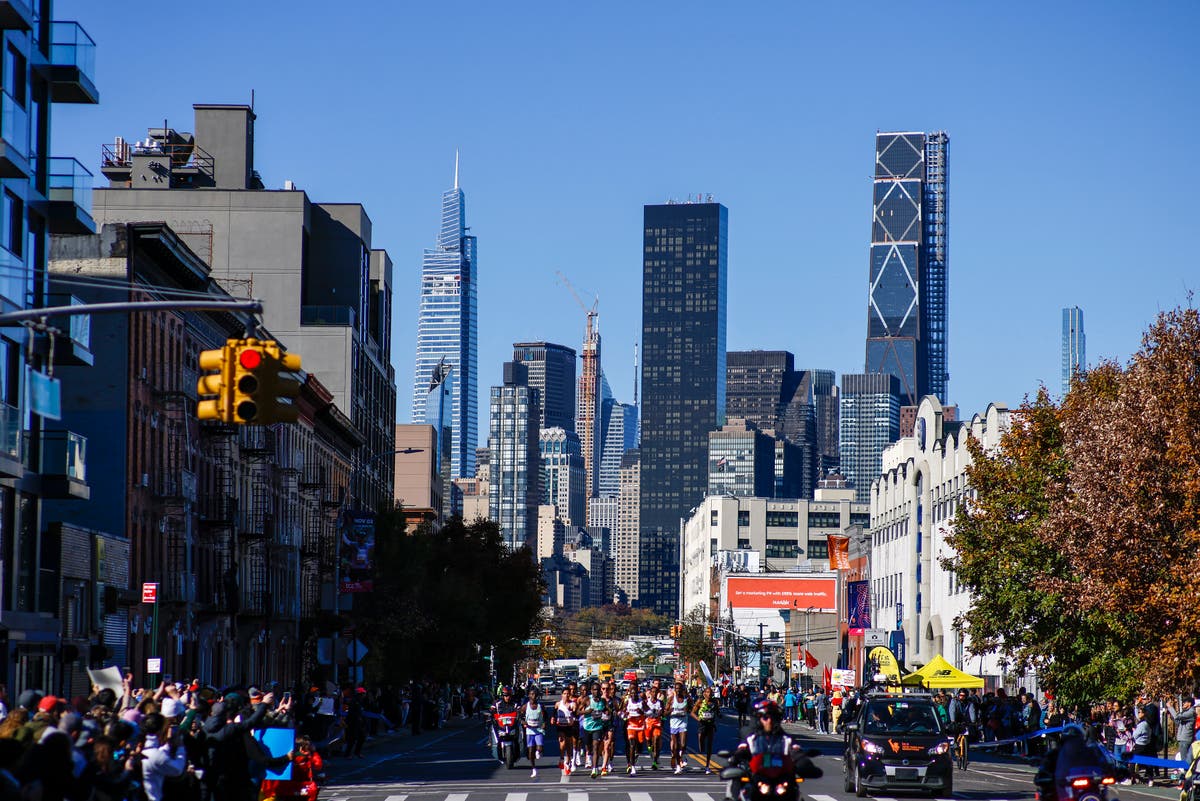
As Americans headed to the polls on Tuesday, many were feeling unseasonably warm November temperatures. Voters in New York City saw the warmest weather on a presidential Election Day since the 1930s . High temperatures, drought, and wind have created the perfect fire conditions in the area.
But it wasn’t just the Big Apple. The World Meteorologist Organization said Thursday that this year is on track to be the world’s hottest on record . Climate change, fueled by greenhouse gas emissions, has made eerie warmth more likely in states up and down the US.

Non-profit group Climate Central said some cities had felt heat 20 degrees above average. “Climate change has made this unusual warmth more likely from Kentucky to Georgia and Florida,” it said Tuesday. At the end of October, the group said 185 of 191 cities it analyzed were warmer than normal, with the highest anomalies across the Rocky Mountains to Mississippi.
Nearly 20 cities saw their hottest Octobers on record, including nearly half in Texas. The Southwest saw particularly elevated temperatures last month. The most unusually hot city was Grand Junction, Colorado: the hub of the state’s wine country and Colorado National Monument.
The world-famous “Sin City” of Las Vegas, Nevada , recorded its hottest October on record, beating a record sent more than 20 years ago. The southern hub of Atlanta has been on a warming trend over the last half-century. “The city now experiences ~15 more days ABOVE average in this pumpkin-spiced season compared to 1970,” Climate Central said.
And, when the calendars flipped to November, trends continued throughout the Southeast and Northeast states. Voters in the Southeast encountered near-record-high temperatures at the polls made at least five times more likely due to climate change. In Tennessee’s capital of Nashville , Wednesday marked a new record high that was made more likely due to climate change.
In South Carolina’s capital of Columbia, climate change made the city’s record high at least 1.5 times more likely. Up the eastern coast, climate change made record early November heat in Boston twice as likely to occur and at least 1.
5 times more likely for Philadelphia . The National Weather Service said record warm minimum temperatures were forecast to continue from the Mid-Atlantic through the Southeast and along the Gulf Coast into the weekend. “High temperatures are not quite reaching record levels but will remain well above normal for these areas for early November,” the agency noted.
Social media users have taken note of the strange change. “If you’re feeling distraught, you can always take a walk outside. Nothing like a beautiful summer day to take your mind off things,” said @CharlesW.
Harper . “It’s 70+ degrees upstate NY today. It’s November.
Something is NOT right,” said user @A_NascimentoD . “It feels fitting that the day after Trump wins the election, cities across the country are hitting record warm temperatures. It’s in the 80s in November across the Mid Atlantic and Northeast,” the climate group Sunrise Movement said.
“It can be 72 degrees or it can be dark at 5 p.m. Both at the same time is making me feel extra deranged,” said X user @joysprick .
“On the bright side, its a 70 degree day in November, so we might not even live through this administration,” wrote @petermarietoto . The post has 88,000 likes. Of course, some weren’t complaining.
“It’s 70 degrees in November here in the Northeast and libs hate this,” said @TTremndeous351 . “Was a miraculous and glorious 70 degrees tonight. Almost November and walking in the water.
Had dinner at the beach. Empty. What a wonderful and unexpected gift.
I thought picnics at the beach were done for year, but I was wrong,” said @NecktieSalvage . November heat also comes amid record drought. Every state in the mid-Atlantic has dryness and drought and 49 states have some drought.
That’s a record 87.8 percent of the Lower 48, according to the US Drought Monitor. The Southwest has been particularly affected.
In 2019, a NOAA study found climate change would make “hot droughts” in the Southwest and Great Plains significantly hotter and longer. Climate change was recently identified as the main driver of worsening drought in the West . “I’m so tired of this climate change s*** for real though bc the tf u mean it was like 77 degrees two days ago and now it’s 39 but also NYC is in a drought???? HELLO???” said @IzzieRamirez .
User @misstessown shared a video of a fire hydrant spurting water onto a road in New York City, which is under a drought watch. Increased precipitation chances are on the way next week, but the East will stay warmer than normal..














